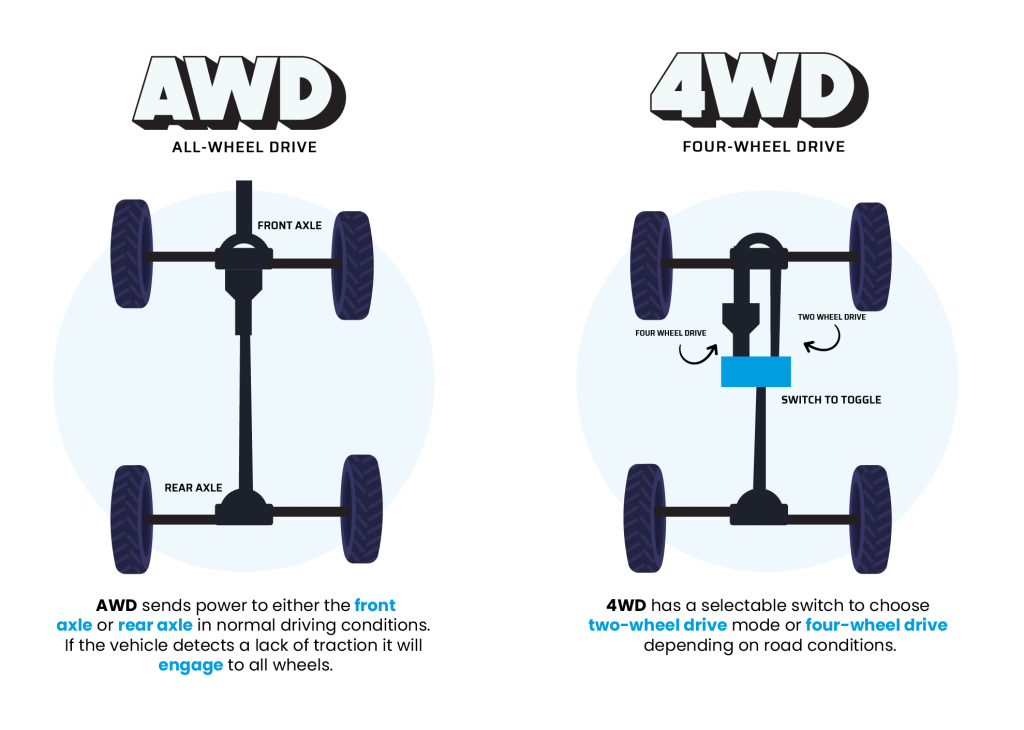Since discovering the first synthetic motors, several exceptional technologies have been included in automobiles. Some have not made their location in vehicles produced nowadays, while few have become a standard. One such distinguished technology is the all-wheel drive, which, in simple words, runs all of the axles of the car. Before studying how AWD works, let us apprehend the widespread AWD.
Team Kgsr
All Wheel Drive (AWD)
There are many power setups in automobiles and SUVs, particularly front-wheel drive, rear-wheel pressure, and all-wheel power. Front-wheel anxiety relates to the most effective front axle being powered by the engine, whereas, in rear-wheel power, the axle on the back is supplied with engine electricity. On the other hand, all-wheel power offers the engine power being disbursed to all to-be-had axles of a car and permits the driving force to have control over all wheels concurrently. This contributes to extra electricity and traction while the vehicle uses surfaces blanketed with snow, gravel, and exclusive terrains.
Many automobile lovers suppose that AWD and Four Wheel Drive (4 wheel drive) are equal concepts. However, vehicle brands might also use each of those phrases interchangeably for advertising and marketing purposes. But with regards to the technical operating, they range a lot. A common issue in both those advanced pressure technologies is that the axles are driven all at an equal time, unlike in only FWD or RWD automobiles.
The Difference Between AWD and 4WD
AWD generically refers to the drive system in which all car axles are lively, regardless of the number of axles and wheels. This is usually located in multi-axle vehicles like shipment trucks and army cars. Alternatively, in 4WD automobiles, four wheels or axles are powered, which is generally determined in cars and SUVs.
Another distinction between the two technologies is that AWD is related to permanent all-axle management, whereas 4WD involves everlasting two-axle control for a specific period as required. So technically, an AWD vehicle cannot be pushed in the 2WD mode because the power to all wheels is furnished continuously. However, a four-wheel-drive automobile can begin as a 2WD, and then, while wished, its drive may be converted into a 4WD. The transformation from 2WD to 4-wheel drive may be manual (driver-managed) or completely computerized, consistent with street conditions.

Another distinction is the amount of strength provided to all wheels or axles. In AWD, all wheels can also, for my part, acquire unique amounts of force, while in 4-wheel drive, all wheels constantly receive identical power. So, while taking a suddenly activated snow, an AWD will allow the outer wheels to get extra power compared to the inner wheels, which need to cover a much less floor. This contributes to managing properly while the power distribution operates with the Electronic Stability Control (ESC) device.
READ MORE :
- How to Add Depth to Your Content With Semantic search engine
- Beauty Tips for Tweens
- How to Become a Video Game Designer
- Artificial intelligence and the coming fitness revolution
- Health care reform bill is ‘problematic
How AWD Works
The two most important components are established in an average AWD gadget. The differentials and the transfer case. The machine has differentials, one positioned inside the middle of the front wheels and the other at the center of the rear wheels. These differentials do the task of directing torque from the power shaft to the wheels. The identical work pattern applies to the rear differential as well. The front differential lets each rotation of the front axle spin at distinct speeds, which is important in right traction throughout a flip. So, both wheels of one axle rotate at different rates.
The functioning of the transfer case is also very critical. The switch case incorporates a setup that controls the rate of the front and the rear axles separately. The design is mainly a viscous coupling or a center differential. The viscous coupling is a mechanical element of plates filled with thick fluid. This is what causes all wheels to rotate while being in proper traction. The transfer case and differentials are what make the AWD gadget paintings.

